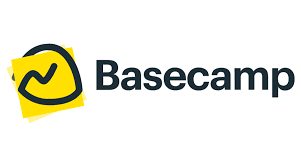20 Best Construction Collaboration Software Reviewed for 2026: Top Tools for Seamless Project Management
The construction industry in 2026 is entering a new digital era, one where collaboration, speed, and accuracy determine success. The proper construction collaboration software can transform how teams communicate, share data, and execute projects. In this guide, we explore the 20 best construction collaboration tools redefining project management, communication, and productivity for construction professionals worldwide.
Why Digital Collaboration Is the Future of Construction
Construction is no longer about just bricks and concrete; it’s about data, coordination, and communication. Projects today often involve multiple stakeholders, including architects, engineers, contractors, suppliers, and clients, who are frequently located in different geographical areas.
Without a central collaboration system, teams face miscommunication, document mix-up, and costly rework. That’s why construction collaboration software has become a cornerstone of modern project management.
By digitising workflows, centralising project documents, and enabling real-time updates, these tools empower project managers to deliver faster, smarter, and with fewer errors. The year 2026 marks a new standard for digital construction collaboration, where cloud-based tools, AI-driven insights in civil engineering, and real-time field communication define productivity and success.

What is Construction Collaboration Software?
Construction collaboration software refers to a suite of cloud-based tools that streamline communication and coordination among all project stakeholders from design to delivery.
It serves as a digital control room, ensuring that every team member, whether on-site or off-site, has access to the latest project data, drawings, schedules, budget updates, and other relevant construction documents.
Key Features Include:
- Centralised communication: Chat, task comments, and updates in one place.
- Document management: Upload, store, and track revisions to drawings and blueprints.
- Scheduling & progress tracking: Assign tasks, set milestones, and monitor performance.
- Budget and cost tracking: Monitor financial progress and prevent overruns.
- Cloud-based storage: Secure and accessible data anytime, anywhere.
- Mobile accessibility: Empower field teams to work and update data on-site.
In essence, the software provides real-time visibility, enabling engineers, contractors, and clients to work seamlessly, regardless of their location.
Why Construction Collaboration Software Matters in 2026
The importance of collaboration tools for construction teams is more pronounced now than ever. As projects grow larger and more complex, communication gaps in construction teams can result in significant financial losses.

Here’s how construction collaboration software is changing the game:
1. Eliminates Information Silos
It centralises all project communication, ensuring that drawings, revisions, and discussions are instantly accessible to everyone involved.
2. Improves Accountability
Each task is traceable, allowing managers to easily monitor who’s responsible for what, thereby reducing blame shifting and confusion.
3. Enhances Decision-Making
With real-time updates, stakeholders make informed decisions based on accurate, up-to-date data.
4. Prevents Costly Rework
Since all revisions are documented, outdated plans are eliminated, saving time and resources.
5. Strengthens Team Collaboration
Architects, engineers, and builders work more cohesively through shared dashboards and integrated communication.
In short, adopting construction collaboration software isn’t just a technological upgrade; it’s a business advantage that every 21st-century construction company should leverage for improved profitability and enhanced efficiency in service delivery.
Top 20 Construction Collaboration Software for 2026
Here are the top-rated construction collaboration software platforms that are shaping the way projects are managed in 2026. Each was evaluated based on usability, integration, scalability, and real-world performance.
1. Procore

Procore is widely recognised as a leader in construction project management tools. It provides everything, from design coordination to financial management, within a single ecosystem.
Key Features:
- Document management, RFI tracking, and progress photos.
- Financial module for cost estimation and invoicing.
- Robust integrations with Revit, Sage, and Microsoft Teams.
Why Choose It:
Procore is ideal for large-scale contractors who handle multiple projects simultaneously. Its dashboard provides real-time visibility, helping to ensure projects stay within scope and budget.
2. Autodesk Construction Cloud

Autodesk Construction Cloud is a powerful suite that combines Autodesk Build, BIM 360, PlanGrid, and BuildingConnected into one package.
Highlights:
- Facilitates design-to-construction coordination.
- Integrated BIM modelling and collaboration tools.
- AI insights for risk management and quality assurance.
Why It Excels:
The construction collaboration software is ideal for complex projects that involve architects, engineers, and BIM professionals who require seamless integration of digital models.
3. Buildertrend

Buildertrend simplifies communication for builders, remodelers, and general contractors. They have a key emphasis on residential builders or realtors.
Core Features:
- Real-time scheduling, client communication, and invoicing.
- Cloud-based access for mobile teams and analysis for labour shortages.
- Customer portal for project transparency.
Best For:
Residential construction teams that value clear communication and simple project tracking. It enables contractors to overcome labour shortages, face challenging competition, and conquer low profit margins.
4. Fieldwire

Designed for on-site teams, Fieldwire bridges the gap between field staff, project managers, clients, contractors, and designers.
Features:
- Task tracking, issue management, and punch lists.
- Offline access for remote construction sites.
- Visual plan markup tools.
Ideal For:
Field contractors (specialist/general), engineers, and site managers seeking quick, mobile-friendly updates, Fieldwire is the best construction collaboration software of choice.
5. Monday.com for Construction

Monday.com provides construction templates that turn general project management into a specialised construction tool.
Strengths:
- Custom automation for workflows.
- Integration with Google Drive and Slack.
- Gantt charts and progress dashboards.
Why It Works:
Best suited for medium-sized construction work teams looking for customisable workflows without steep learning curves.
6. Smartsheet

A hybrid between spreadsheets and project management dashboards, Smartsheet empowers teams with visual collaboration.
Core Benefits:
- Timeline and budget tracking.
- Resource management.
- Automated reporting with AI-powered intelligence.
Best For:
Project owners and developers who want transparency and measurable KPIs.
7. CoConstruct

Tailored for home builders, CoConstruct streamlines client communication and estimation. CoConstruct merged with Buildertrend to create a seamless user experience, where CoConstruct focuses on simplifying business for busy builders and Buildertrend on a holistic approach to construction management, showing how the world builds.
Highlights:
- Job costing, budgeting, and scheduling in one tool.
- Customer portal for transparent communication.
- Simplifies bidding and subcontractor coordination.
Why Choose It:
It’s an excellent option for contractors managing custom projects and residential builds.
8. PlanGrid

PlanGrid (now part of Autodesk) remains a benchmark for digital blueprints. PlanGrid is the first construction productivity software that enables remote collaboration and work between owners and contractors across various industries, including heavy civil, commercial, and others.
Features:
- Easy drawing comparison and version control.
- Field reporting and annotation.
- Cloud sync with Autodesk Docs.
Best For:
Architects and engineers who deal with frequent design updates.
9. Bluebeam Revu

Known for its exceptional PDF collaboration, Bluebeam Revu enables teams to review, mark up, and share documents in real-time.
Features:
- Real-time design reviews with process-efficient tools.
- Secure cloud storage, multiple apps connectivity, and data encryption.
- Simplified RFI and submittal workflows.
Ideal For:
Architectural and design firms are seeking robust document markup capabilities.
10. Aconex (by Oracle)

A global leader in construction communication platforms, Aconex specialises in enterprise-scale project collaboration, connecting teams and creating a record for the entire project lifecycle.
Key Strengths:
- Tracks every email, file, and approval.
- Supports megaprojects across regions with an efficient process management engine.
- Top-tier compliance and audit features for accountability and minimal disputes.
Best For:
Infrastructure projects, EPC contractors, and multinational developers.
11. Trimble Connect

Trimble Connect focuses on model-based collaboration using 3D environments. It is a highly intuitive cloud platform for construction and geospatial professionals.
Features:
- Integrates with Tekla Structures and SketchUp.
- 3D model sharing and live updates.
- Great for design-build coordination.
Why It Stands Out:
Essential for construction teams using Building Information Modelling (BIM).
12. e-Builder Enterprise

Purpose-built for capital project management, e-Builder Enterprise enhances transparency and control. It utilises machine learning and AI analytics to provide accurate predictions in the tech services sector.
Features:
- Process automation (AI//ML) and cost management.
- Real-time analytics in business automation, predictive analysis, and information analytics.
- Secure cloud database.
Used By:
Government agencies, universities, and infrastructure project owners.
13. LetsBuild

LetsBuild focuses on keeping projects aligned and transparent in real time.
Highlights:
- Instant progress tracking with Gantt charts
- Health and safety compliance.
- On-site mobile updates on iOS, Android, or desktop.
Why Teams Choose It:
Perfect for field operations where time and safety are top priorities.
14. Contractor Foreman

Contractor Foreman is an affordable yet powerful construction management software for contractors. It aids in monitoring labour, materials, project schedules, and finance.
Features:
- 35+ modules including invoicing, CRM, and scheduling.
- Free training and customer support.
- Available in 75+ countries.
Ideal For:
Small contractors looking for enterprise features at a reasonable price.
15. Wrike for Construction

Wrike offers agile project management tailored for construction workflows.
Advantages:
- Custom automation to optimise resource management.
- Detailed reporting dashboards for proper time and budget monitoring.
- Easy integration with design tools.
Best For:
Large teams coordinating multiple contractors and designers.
16. ClickUp for Construction

ClickUp has rapidly gained traction among modern project teams.
Features:
- Task lists, timelines, and workload views with aligned teams and contractor resources.
- Strong mobile app performance to ensure effective progress-tracking.
- Budget-friendly pricing tiers
Why It’s Popular:
Its versatility and clean UI make it ideal for small to mid-sized firms.
17. Newforma Project Centre

The Newforma Project Centre platform excels at managing complex project documentation.
Key Benefits:
- Email integration and submittal tracking.
- Document indexing and fast search features.
- Integrates with Revit and AutoCAD.
Best For:
Architectural and consultancy firms that deal with extensive documentation work.
18. ProjectManager.com

ProjectManager.com This all-rounder combines scheduling, reporting, and collaboration of construction teams.
Core Features:
- Gantt charts, real-time availability, and progress tracking.
- Workflow automation provides an additional layer of security for accessing project information.
- Integration with Google Workspace and Excel
Why It’s Useful:
Helps managers visualise project health in real time and make faster decisions.
19. Basecamp

A classic in collaboration, Basecamp remains relevant with its simplicity, offering personalised and individual home screens for team members.
Strengths:
- To-do lists and message boards.
- File storage and automatic check-ins.
- Affordable for a small firm.
Best For:
Independent contractors and freelancers are managing smaller builds.
20. Asana for Construction

Asana brings structure and clarity to fast-moving teams. This construction collaboration software enables users to manage campaigns, produce creative content, and streamline project intake strategies.
Features:
- Visual task tracking of project intake and progress.
- Integrations with AutoCAD and Google Drive.
- Ideal for multidisciplinary project environments.
Why It Works:
Makes it easy to track design updates, team responsibilities, and task timelines.
Market Trends Shaping Construction Collaboration Software in 2026
The construction industry in 2026 is evolving at a faster pace than ever before, driven by the need for smarter, faster, and more connected project delivery systems. The rise of construction collaboration software has become central to this transformation, bridging the gaps between architects, engineers, contractors, and clients through digital platforms that enable seamless communication and data sharing.

Here are the key trends defining the future of collaboration tools for construction teams in 2026:
1. Artificial Intelligence (AI) and Predictive Insights
AI is no longer a futuristic concept; it’s already embedded in the best construction collaboration software. AI algorithms can now:
- Analyse historical project data to predict delays, budget overruns, or equipment failures.
- Provide intelligent recommendations for scheduling, material procurement, and workforce allocation.
- Automate repetitive administrative tasks such as report generation and document management.
This helps project managers focus on strategic decisions rather than paperwork, improving efficiency and profitability.
2. IoT Integration and Real-Time Equipment Monitoring
The Internet of Things (IoT) in construction continues to transform the way construction sites operate. When combined with construction collaboration software, IoT enables:
- Live equipment tracking and predictive maintenance alerts.
- Safety monitoring, with sensors detecting unsafe working conditions.
- Smart resource allocation, ensuring machines and tools are used optimally.
This integration reduces downtime, improves safety compliance, and enhances overall project visibility.
3. Building Information Modelling (BIM) Collaboration
In 2026, BIM collaboration software has become standard in modern construction project management. When linked with construction project management tools, BIM provides:
- 3D visualisation of design models in real-time.
- Instant updates when engineers or architects modify designs.
- Conflict detection allows early resolution of design errors before construction begins.
The result is a unified digital environment where every stakeholder works from the same, most up-to-date model, eliminating confusion and costly rework.
4. Green Construction and Sustainability Tracking
Sustainability is now a non-negotiable requirement in modern infrastructure. The latest construction collaboration software includes modules that help companies measure:
- Carbon emissions and energy efficiency of equipment and materials.
- Waste management metrics and recycling rates.
- Compliance with green certification standards such as LEED or BREEAM.
By integrating sustainability tracking into collaboration platforms, firms can demonstrate their environmental commitment while gaining a competitive edge in tenders.
5. Cloud Scalability and Remote Collaboration
With global teams and remote work now standard, cloud-based construction management software ensures that every stakeholder can access documents, plans, and progress reports from anywhere.
- Cloud scalability: means systems can handle hundreds of concurrent users without slowing down.
- Secure file sharing: eliminates the chaos of email attachments and manual updates.
- Multi-device compatibility: this includes (desktop, tablet, mobile), ensuring field engineers and managers stay connected.
This flexibility supports large-scale, cross-border projects, reinforcing why construction collaboration software has become indispensable to the industry in 2026.
How to Choose the Best Construction Collaboration Software
Selecting the best construction collaboration software for project teams in 2026 can be a challenging process, given the numerous available tools and their varying features. The right choice depends on your team’s size, technical requirements, and budget, but more importantly, on how well the software aligns with your project workflows.

Below is a step-by-step guide to choosing the right construction collaboration software for your organisation:
1. Define Your Project Scale and Team Needs
- Small firms and independent contractors may find tools like Basecamp, Contractor Foreman, or ClickUp sufficient for managing communication and task tracking.
- Medium to large-scale firms handling complex infrastructure or design-build projects benefit more from enterprise-grade solutions, such as Procore, Aconex, or Autodesk Construction Cloud.
- Assess how many team members will use the platform, and whether it supports multiple project types simultaneously.
2. Evaluate Integration Capabilities
A key factor when selecting construction project management tools is how well they integrate with your existing systems:
- Look for software that supports BIM, CAD, and accounting integrations.
- Verify compatibility with Enterprise Resource Planning (ERP) and procurement tools to ensure effective cost control and management.
- Ensure it can exchange data seamlessly between field and office teams.
Integration ensures that your software ecosystem works as one, minimising duplicate data entry and communication silos.
3. Consider Ease of Use and Training Requirements
Even the most powerful construction communication platforms are useless if your team struggles to adopt them. Choose a solution that:
- Provides a simple and intuitive interface for both technical and non-technical users.
- Includes training resources, webinars, and tutorials for easy onboarding.
- Supports mobile functionality for field reporting and document access.
User-friendly software reduces frustration and ensures faster implementation across all departments.
4. Check Data Security and Compliance
With the increasing flow of digital data across global teams, cybersecurity has become a priority. Before committing, verify that your construction management software offers:
- End-to-end encryption for sensitive project documents.
- Two-factor authentication (2FA) and access controls.
- Compliance with standards such as ISO 27001, GDPR, or SOC 2.
This ensures your data and your client’s information remain protected at all times.
5. Evaluate Support, Scalability, and Updates
The best software grows with your company. When reviewing construction collaboration software, consider:
- Customer support responsiveness and 24/7 availability are significant pluses.
- Regular feature updates and bug fixes that improve user experience.
- Scalability allows the addition of more users, projects, and integrations as your business expands.
These features future-proof your investment and ensure continuous performance as your workload increases.
Bonus: Reviews of the Best Construction Collaboration Software for Contractors and Engineers
Before purchasing, explore detailed reviews of the best construction software for contractors and engineers on trusted platforms like Construction Frontier, Capterra, and G2 Crowd. User reviews highlight real-world pros and cons, helping you narrow down your shortlist to tools that perform well in the field.
Conclusion: Building a Connected Construction Future
Construction is teamwork at scale, and in 2026, teamwork happens digitally. With the right construction collaboration software, teams no longer struggle with version mismatches, delayed Request For Information (RFIs), or lost documentation. Instead, they build smarter, faster, and more efficiently.
Whether you’re a contractor aiming for better coordination or an engineer focused on quality assurance, adopting these tools will future-proof your operations and drive long-term efficiency. The top construction collaboration tools listed here aren’t just apps; they’re engines of innovation powering the construction revolution.
Call to Action: Start Collaborating Smarter, Today
The future of construction is connected. Explore the top-rated construction collaboration software tools reviewed above and find one that aligns with your project’s scale, workflow, and goals.
Empower your team, streamline your processes, and build the future, one collaboration at a time. Check out constructionfrontier.com for the best construction news, trends, and insights.





